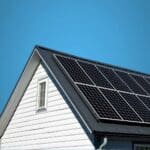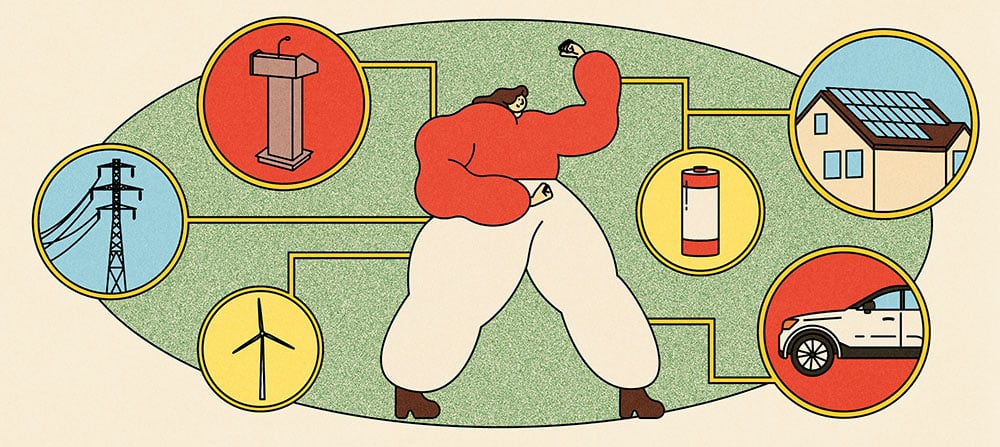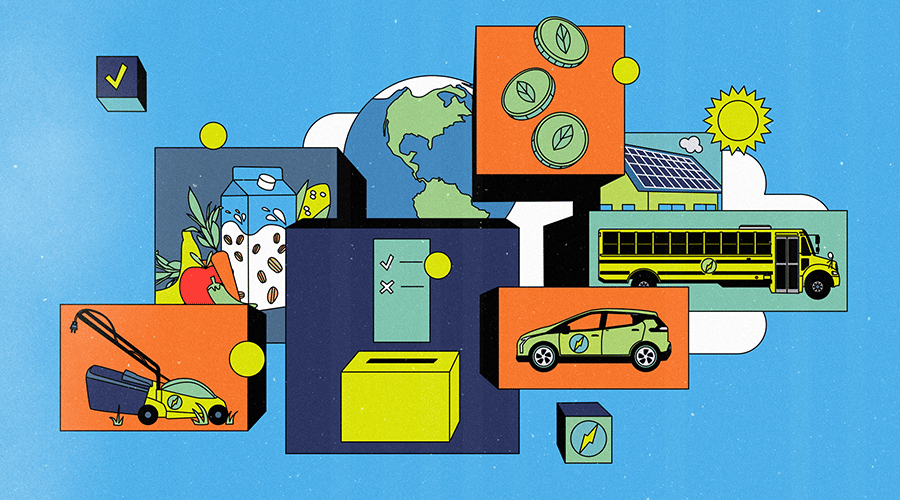Want less pollution in your neighborhood? Wishing solar roofs and electric buses were everywhere you looked? There are some very concrete things you can do to help speed up climate progress and help your state or town transition to clean energy sources — beyond just voting (very important!) or “electrifying” your life through home upgrades (also very important!).
As we speak, there are federal dollars available to states and localities — money sitting on the table — which can be used to improve public health and air quality, bring new clean jobs, and other clean energy benefits.
So, what are these federal funds?
In 2021 and 2022, President Biden signed into law the Infrastructure Investment and Jobs Act (IIJA), the Inflation Reduction Act (IRA), and the CHIPS and Science Act (CHIPS). These three laws represent the largest ever climate investment in American history, to the tune of $2 trillion in new federal spending over 10 years.
The Inflation Reduction Act alone includes $370 billion toward investments in clean energy solutions to help reach our country’s carbon reduction goals. It aims to spur widespread clean tech innovation, create jobs, and make it easier for all communities to enjoy cleaner air, lower electric costs, and other benefits.
Individuals and Communities Are Already Tapping These Funds
Americans are already accessing IRA funds directly by taking advantage of consumer discounts and tax credits for home upgrades, electric vehicle purchases, and other new technologies that work smoother (and are more climate friendly) than old, outdated technologies.
But the IRA also set aside funds that make it possible for states, local governments, tribes, schools, hospitals, public utilities, churches, non-profit organizations (and other tax-exempt entities) to build clean energy projects through a funding mechanism called “direct pay.”
That means, with IRA funding:
- A local school system can transition to clean, electric-powered buses;
- A city can convert its vehicles and buses to electric vehicles and build out its charging infrastructure;
- A town can weatherize its senior center so it’s less costly to heat, and use money saved on the town’s energy bills to help seniors behind on utility bills;
- A local housing authority can repair public housing to make it safer, more livable, and more energy efficient; and
Already, schools and tribes are taking advantage of the federal funds to:
- Electrify their school bus fleets: Montgomery County Public Schools in Maryland has the largest school bus electrification project in the U.S. (86 buses currently and expecting 240 more in the 2024-2025 school year). Los Angeles Unified School District in California purchased 180 electric school buses last year, removing up to 780,000 tons of carbon dioxide annually and saving the district $2 million per year.
- Generate energy via solar and wind power in tribal communities: The Cannon Ball community of Standing Rock in North Dakota has installed a 300-kilowatt solar farm, enough to power 60 homes. The Navajo Nation Kayenta Solar Program in Arizona is the first utility-scale solar project on the Navajo Nation, producing enough electricity to power 13,000 Navajo homes. The Navajo Nation is the largest reservation in the U.S., and 30% of homes there don’t have electricity, partly because it costs an average of $40,000 to connect a home on the reservation to the electricity grid.
Those clean energy projects are just a few examples of what’s possible. Many more states and communities could be powered by cleaner, healthier clean energy – including yours! – but only if we urge our state and local leaders to act.
Where You Come In!
It’s time for all of us to speak up to make sure our state, city, and communities are doing all they can to tap into these federal resources now available to improve our lives locally – less pollution, more jobs, better technology and more innovation.
Reach out to your representatives and ask that they apply federal funds to electrify your local school bus fleet, install solar on your nearby school, install community electric vehicle chargers–or whatever clean energy project matters to you.
All it takes to become a clean energy advocate in your community is a desire for something to be better, and a willingness to take action – one step at a time.
Steps to becoming a clean energy advocate in your community:
- First of all: Are you registered to vote? Do you know where your polling location is? Here are some resources.
- Do you know who your elected representatives are? Here’s a resource for that, too.
- Reach out to your legislators and ask them to apply for federal funds for specific clean energy improvements in your community.
- Ask your representatives how they are tapping into federal resources or what their plan is to get the money flowing to state agencies and residents.
- Consider attending your local public utility commission, (small group of people appointed to make big decisions about your local power sources) and city council hearings to see how local power decisions are made and their anticipated impact on the community.
- See if there are local clean energy campaigns near you. Join or offer to help organize a local event to raise awareness about electric buses, solar, and clean energy benefits to your community.
- Write a letter to the editor of your local paper or news demanding that your representatives tap the federal resources to improve your community and beyond.
Getting federal money into state and city-level projects that deliver energy savings and climate benefits will benefit your community and make a meaningful climate impact. Now is the time to make sure your community or state isn’t left behind when it comes to tapping federal funding for clean energy improvements.
Passing the IRA and IIJA were decisions made by elected leaders who received pressure from their constituents – you! Your energy matters. Your voice matters. We have to keep going and moving forward to realize the best of what our future has to offer us all.















